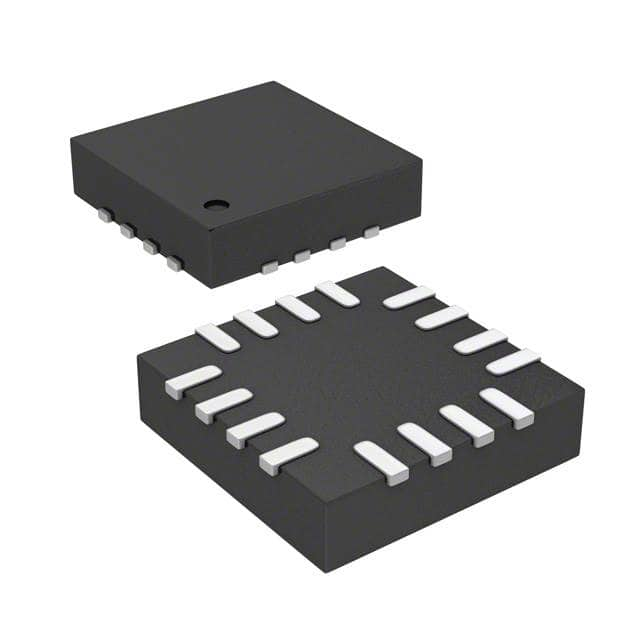Viz Specifikace pro podrobnosti o produktu.

L3G4200DTR
Product Overview
Category
The L3G4200DTR belongs to the category of MEMS motion sensors.
Use
It is used for measuring angular rates in three dimensions.
Characteristics
- Small form factor
- Low power consumption
- High sensitivity and accuracy
- Digital output
- Integrated temperature sensor
Package
The L3G4200DTR is available in a small, surface-mount package.
Essence
The essence of the L3G4200DTR lies in its precise measurement of angular rates, making it suitable for applications requiring motion sensing.
Packaging/Quantity
The L3G4200DTR is typically supplied in reels with a specific quantity per reel.
Specifications
- Operating Voltage: 2.4V to 3.6V
- Sensing Range: ±250/±500/±2000 degrees per second (dps)
- Output Data Rate: 100Hz to 800Hz
- Interface: I2C/SPI
Detailed Pin Configuration
The L3G4200DTR has a standard 16-pin plastic land grid array (LGA) package with the following pin configuration: 1. VDD 2. GND 3. SCL/SDI (Serial Clock/Data Input) 4. SDA/SDO (Serial Data/Output) 5. CS (Chip Select) 6. INT1 (Interrupt 1) 7. INT2 (Interrupt 2) 8. Temperature Sensor Output 9-16. No Connection
Functional Features
- Three-axis angular rate sensor
- Built-in temperature sensor
- Programmable digital output and control
- Embedded self-test
- Power-down and sleep modes
Advantages and Disadvantages
Advantages
- High accuracy and sensitivity
- Low power consumption
- Small form factor
- Digital output for easy interfacing
Disadvantages
- Limited sensing range compared to some other models
- Requires careful PCB layout for optimal performance
Working Principles
The L3G4200DTR utilizes the principle of Coriolis force to measure angular rates. When the sensor experiences angular motion, the Coriolis force causes a deflection in the sensing elements, which is then converted into electrical signals for measurement.
Detailed Application Field Plans
The L3G4200DTR is well-suited for various applications including: - Inertial measurement units (IMUs) for drones and robotics - Gesture recognition in consumer electronics - Image stabilization in cameras and camcorders - Virtual reality and augmented reality systems - Motion-controlled gaming devices
Detailed and Complete Alternative Models
Some alternative models to the L3G4200DTR include: - MPU-6050 - ADIS16470 - ITG-3200 - LSM9DS1
In conclusion, the L3G4200DTR offers high precision and reliability in measuring angular rates, making it an ideal choice for motion sensing applications across various industries.
Word Count: 410
Seznam 10 běžných otázek a odpovědí souvisejících s aplikací L3G4200DTR v technických řešeních
What is the L3G4200DTR?
- The L3G4200DTR is a three-axis digital gyroscope sensor that measures angular rate in degrees per second.
What are the key features of the L3G4200DTR?
- The key features of the L3G4200DTR include low power consumption, high sensitivity, and a wide range of programmable full-scale ranges.
How is the L3G4200DTR typically interfaced with a microcontroller?
- The L3G4200DTR is commonly interfaced with a microcontroller using I2C or SPI communication protocols.
What are some common applications of the L3G4200DTR?
- Common applications of the L3G4200DTR include motion-controlled gaming devices, inertial measurement units (IMUs), and robotics.
How can the L3G4200DTR be calibrated for accurate measurements?
- Calibration of the L3G4200DTR typically involves compensating for bias and scale factor errors through software algorithms.
What are the typical operating voltage and current requirements for the L3G4200DTR?
- The L3G4200DTR typically operates at 3.3V or 5V and has low current consumption, making it suitable for battery-powered applications.
Can the L3G4200DTR be used for tilt sensing applications?
- Yes, the L3G4200DTR can be utilized for tilt sensing by measuring changes in angular rate to determine orientation.
Are there any known limitations or challenges when using the L3G4200DTR?
- One limitation of the L3G4200DTR is its susceptibility to external vibrations and shocks, which may affect measurement accuracy.
What are the programming interfaces or libraries available for integrating the L3G4200DTR into a project?
- There are various libraries and code examples available for popular microcontroller platforms such as Arduino and Raspberry Pi for easy integration.
How can the data from the L3G4200DTR be processed and utilized in a technical solution?
- The data from the L3G4200DTR can be processed using filtering and sensor fusion algorithms to derive orientation, motion tracking, and gesture recognition in applications.

